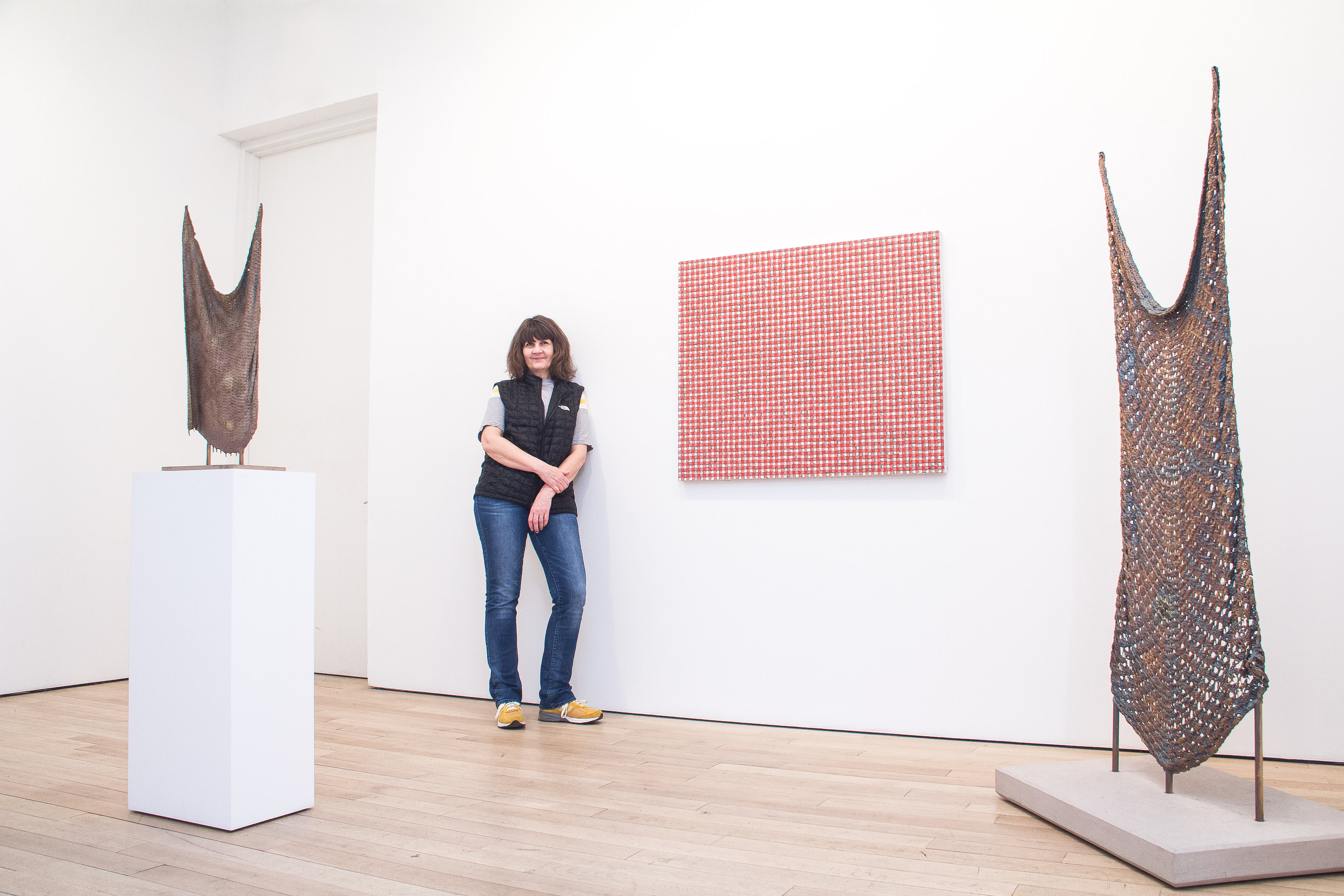
Michelle Grabner is a prolific force in the art world today. Based in Milwaukee, she works across media—from abstract painting and sculpture to paper weaving—and describes her practice as rooted in a deeply Midwestern ethic. Given her affinity for what she terms “the horizontal landscape of America’s interior,” Grabner’s appointment to artistic director of Cleveland’s first triennial for contemporary art couldn’t be more fitting.
The summer-long exhibition, FRONT International, is the product of a monumental collaboration between seven of the city’s cultural institutions, including the Museum of Contemporary Art Cleveland and the Cleveland Museum of Art. And with 114 local and international artists—notable examples include Jessica Stockholder, Josh Kline and Yinka Shonibare—the exhibition isn’t about Cleveland per se. “FRONT explores the American city as genre, and takes Cleveland’s surrounding area as a site of distinct artistic formation,” says Grabner.
Currently a professor at the School of the Art Institute of Chicago, Grabner identifies as both an insider and outsider. As co-curator of the 2014 Whitney Biennial and the subject of several solo shows in New York, as well as a mid- career retrospective at the Indianapolis Museum of Art, Grabner comfortably inhabits the centers of cultural production. At the same time, she fiercely champions talent beyond major coastal art cities. She and her husband, painter Brad Killam, run two project spaces: the Poor Farm in Little Wolf, Wisconsin, and The Suburban, which the couple founded in their Illinois home in 1999 and now operate out of a Milwaukee storefront.
This middle-American sensibility carries through to her own work as well. Grabner’s canvases are embedded with patterns that she traces to her Lake Michigan upbringing. Drawing on gingham textiles, paper towel quilting and even her son’s Froebel kindergarten exercises, Grabner mines formal hierarchies within natural and domestic motifs as a means of critiquing the trivialization of women’s work. Visual order, she believes, is always political.
Grabner is also known for her loyalty to the Rust Belt—a region at the crossroads of nearly every socioeconomic issue, yet often neglected as a place of artistic production. She brings her insistence on looking beyond the center to FRONT. Exhibitions and programming extend well beyond Cleveland’s city limits to the Akron Art Museum and Oberlin’s Frank Lloyd Wright house. And FRONT curators activate non-traditional venues as well—Shonibare’s installation of approximately 6,000 books displayed in open bookcases, each wrapped in African wax cloth, shows in the Cleveland Public Library, while a display of Allan Sekula’s photographs reanimates the hull of a retired freighter docked in a downtown harbor. There is also an exhibition titled “Great Lakes Research” that focuses on a selection of artists, like painter Beverly Fishman, who work in the vicinity.
“I’ve always wanted to get back to Cleveland. I understand the place,” says Grabner, recalling her emotions after her 2013 MoCA Cleveland survey, “I Work From Home.” “I think I have great distance vision because I have lived all my life in the American interior,” explains Grabner. “I had to experience the offerings of cultural centers like New York and Los Angeles from afar.”
Fortunately, geographic distance allows her to see some of the art world’s blind spots.



